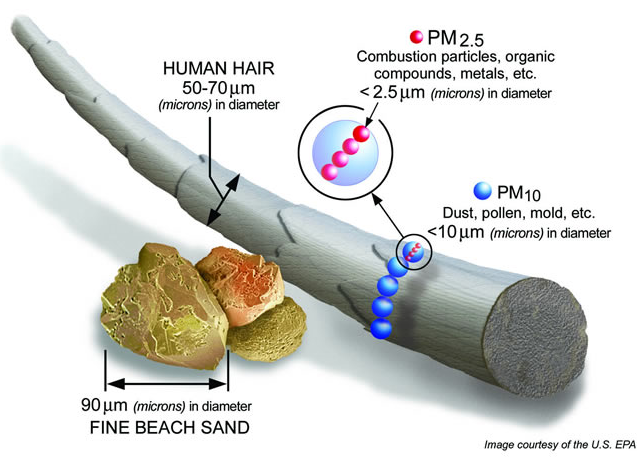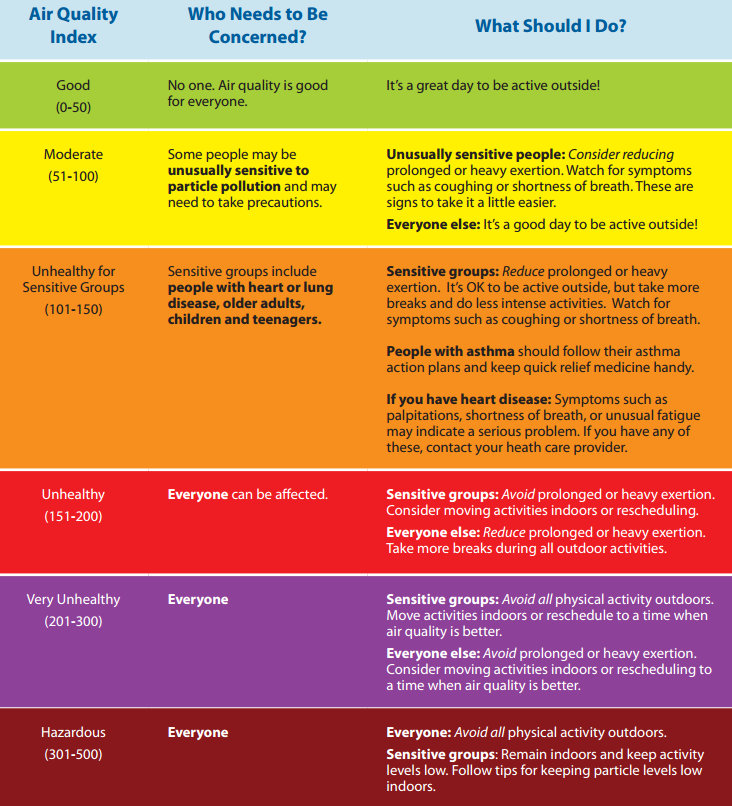Be Smoke Smart.
What is in wildfire smoke?
Smoke is composed primarily of carbon dioxide, water vapor, carbon monoxide, particulate matter, hydrocarbons and other organic chemicals, nitrogen oxides, trace minerals and several thousand other compounds. The actual composition of smoke depends on the fuel type, the temperature of the fire, and the wind conditions. Particulate matter is the principal pollutant of concern from wildfire smoke for the relatively short-term exposures (hours to weeks) typically experienced by the public. Particulate matter is a generic term for particles suspended in the air, typically as a mixture of both solid particles and liquid droplets. Fine particulate matter (PM2.5) found in smoke tend to be very small - less than 2.5 micrometers in diameter. For comparison, see the how PM2.5 compares with a human hair:

What are the health effects of wildfire smoke?
The effects of smoke range from eye and respiratory tract irritation to more serious disorders, including reduced lung function, bronchitis, exacerbation of asthma, and premature death. Studies have found that PM2.5 is linked (alone or with other pollutants) with increased mortality and aggravation of pre-existing respiratory and cardiovascular disease. In addition, particulates are respiratory irritants, and exposures to high concentrations of particulate matter can cause persistent cough, phlegm, wheezing and difficulty breathing. Particles can also affect healthy people, causing respiratory symptoms, transient reductions in lung function, and pulmonary inflammation. PM2.5 can also affect the body’s immune system and make it more difficult to remove inhaled foreign materials from the lung, such as pollen and bacteria.
Air quality index (AQI) for PM2.5

What you can do to protect yourself and Be Smoke Smart
1. Reduce or stop outdoor activity and stay inside.
2. Keep AC on if available, the fresh-air intake closed, filter clean, and windows closed.
3. Pay attention to air quality on AirNow.gov.
4. Follow the advice of your doctor especially those with heart or lung disease.
5. Wet or dry cloths, dust, or surgical masks do not protect you from ozone or fine particulates.
6. If you are a healthy adult, respirators marked NIOSH N95 can provide some protection from fine particulates with adequate fit testing and if you must be outside.
7. Stay hydrated.
8. Keep indoor air clean; don’t burn candles, vacuum, or smoke tobacco products.
9. Use a portable air purifier. Create a clean air room in your home.
10. Consider relocating temporarily.
Last modified on 05/12/2025
Let’s Stay in Touch
Sign up for our newsletter

